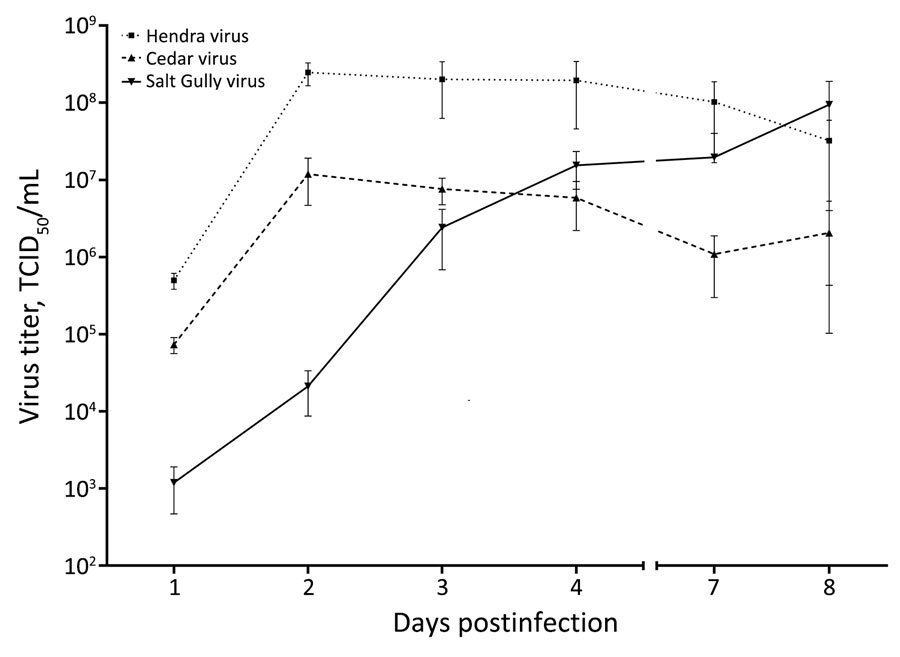Volume 31, Number 9—September 2025
Dispatch
Novel Henipavirus, Salt Gully Virus, Isolated from Pteropid Bats, Australia
Figure 2

Figure 2. Growth of Salt Gully virus in Vero cells compared with Hendra virus and Cedar virus from study investigating a novel henipavirus, Salt Gully virus, isolated from pteropid bats, Australia. Vero cell monolayers were infected with each virus at a multiplicity of infection of 0.01 in triplicate, and tissue culture supernatant was collected until day 8 for TCID50 assay to determine the viral titer. Error bars indicate the standard deviation of the mean between replicates. TCID50, 50% tissue culture infectious dose.
Page created: August 06, 2025
Page updated: August 26, 2025
Page reviewed: August 26, 2025
The conclusions, findings, and opinions expressed by authors contributing to this journal do not necessarily reflect the official position of the U.S. Department of Health and Human Services, the Public Health Service, the Centers for Disease Control and Prevention, or the authors' affiliated institutions. Use of trade names is for identification only and does not imply endorsement by any of the groups named above.